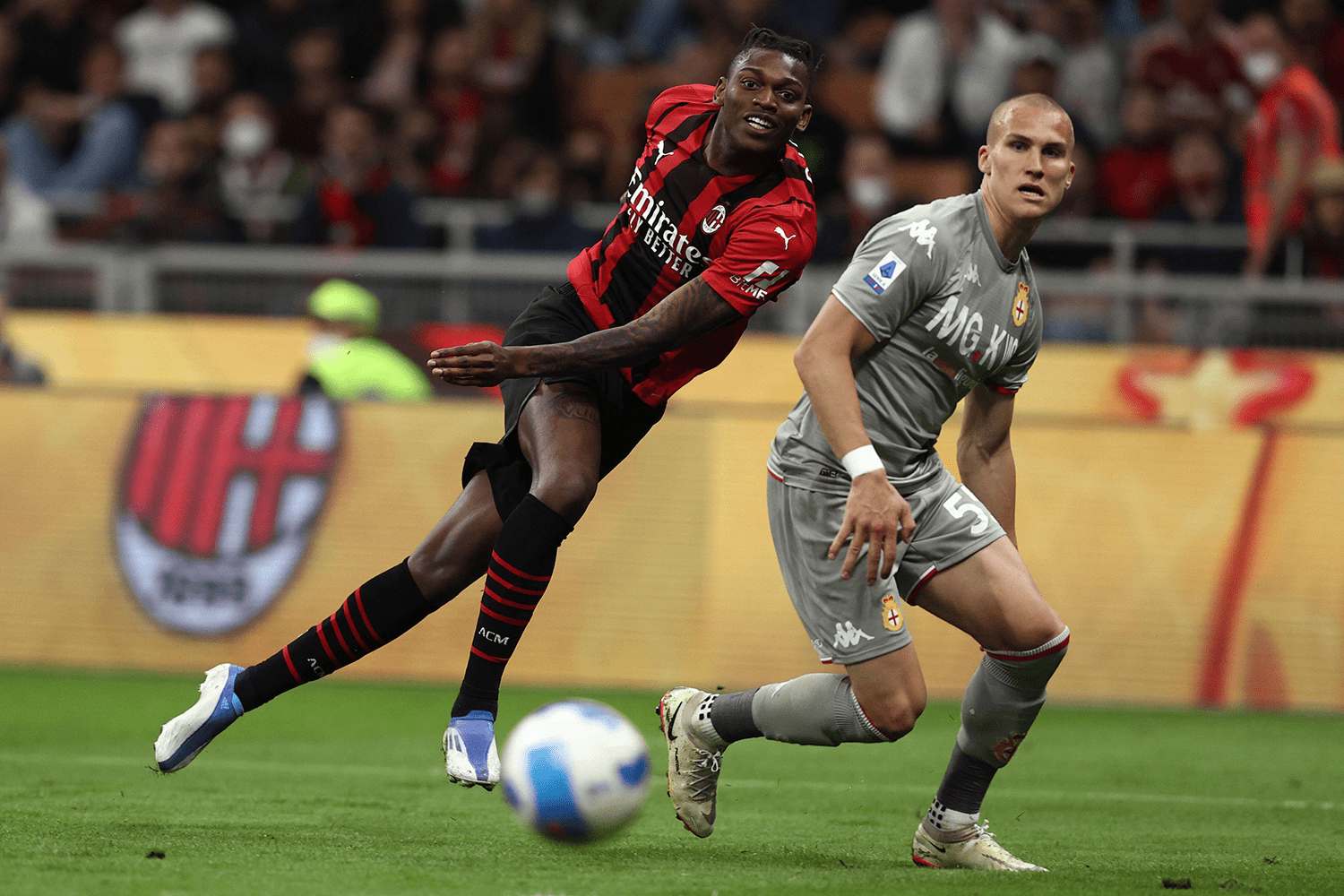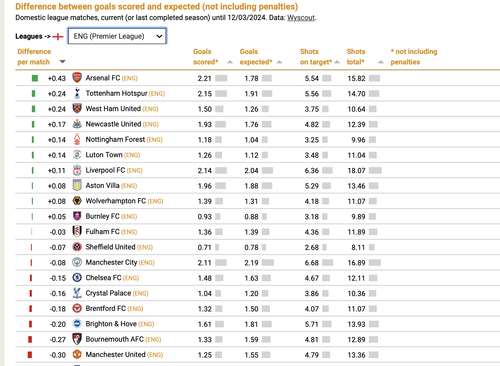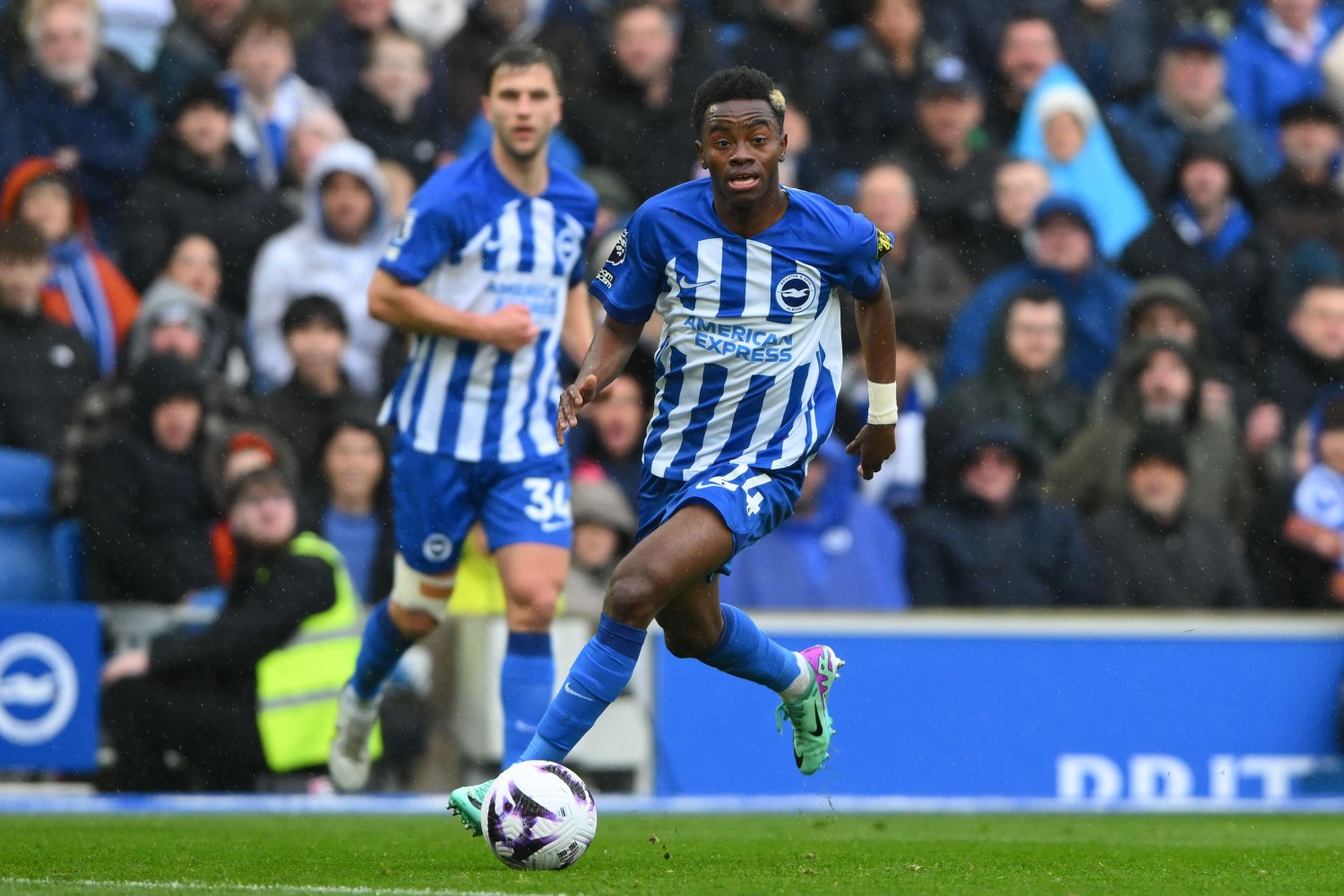Bit light on detail and real in depth analysis, but worth a read maybe. Talking about Woolwich's hybrid press system where they switch from Man to Man to zonal. It's not revolutionary, various other coaches have used variations of the man to man and/or hybrid system. But it does take coaching, energy and athleticism, and some tactical nous.
The pattern of Arse/Liverpool was similar in some way to Arse v us. Early aggressive energetic press, but once you break it a couple of times, and energy levels start to wain, it can turn lazy or into pure zonal.
This is where the athleticism, combined with technical ability and bravery of Bissouma is so vital. Like many teams, even the best ones, we/he struggled early with that energetic press. But he didn't disappear up his own arse, he kept trying to play and beat the press and gradually we got a foothold in the game.
Woolwich average 60% possession. They had 46% against us.
https://www.thetimes.co.uk/article/how-Woolwich-beat-liverpool-using-hybrid-pressing-nqhjpspvl
“Hybrid-pressing” was how Jamie Carragher described the tactics Woolwich used in their 3-1 win over Liverpool on Sunday — tactics that neutered Jürgen Klopp’s team and reduced them to season-low statistics for shots on target (one) and expected goals (0.3).
But what is “hybrid-pressing”, and how can a team beat it?
Simply, it is a combination of both zonal pressing (the conventional style of defending) and man-marking.
Zonal marking is the conventional style of defending: it prioritises covering certain areas, typically the centre of the pitch. But that means there are spaces where opponents can hold possession freely, without pressure — often in deeper areas or out wide.
This 4-4-2 shape taken up by Woolwich below is an example of zonal defending — they sit off and are primed to spring out and apply pressure if Liverpool venture too far forward.
Zonal pressing is fundamentally reactive; when an opponent enters a zone the press is triggered. But man-to-man pressing is proactive.
In its simplest form, man-to-man pressing means that the players of the team without possession are assigned an opponent to track around the pitch. It is the style commonly associated with Marcelo Bielsa and his Leeds United side, but can actually be traced back to Herbert Chapman and his Woolwich team.
“The advantages of rigid man-marking are also clear: simplicity, no communication problems when passing and moving, no special tactical training, playing off an ideally superior athleticism, and a continuous focus on the opposition’s key player,” writes Rene Maric, the head of coaching and playing style at Bayern Munich, for the German tactical website
Spielverlagerung.
There are a couple of ways to man-mark: players can follow their opponents around the pitch, or they can man-mark and pass them on to their team-mate (e.g. a central midfielder may wish to pass the player they are marking to a winger or full back if they are pulled out wide).
While in recent years some sides have used a specialist man-marker within a zonal system (Sir Alex Ferguson would often task Park Ji-sung with sticking to particularly dangerous opponents, notably Andrea Pirlo), the man-marking tactic requires almost every outfield player to commit, so the defending team can regain the ball high up the pitch.
One of the key principles of a man-marking press is to “split the pitch” in half, to limit the space available to the team with possession.
Woolwich funnel the ball to one side and split the pitch, so Liverpool are trapped on their left wing. Woolwich eventually win possession as Virgil van Dijk is unable to find a team-mate
Most coaches tend not to use all ten outfield players when pressing in a man-marking system, though, and leave a covering player at the back. If the opponent has one striker, the pressing team usually leaves two defenders at the back so one can man-mark and the other can sweep.
The trade-off for having a covering defender is that the pressing team’s striker often has to try to press two centre backs, which is why it is important to split the pitch and prevent both centre halves from getting on the ball.
Consequently, the team with possession will usually have a “free man”, but the pressing team will try to make sure this player is one whom they are content with holding the ball freely — typically a centre back with a limited passing range.
One of the downsides of man-marking is that it can be manipulated by smart movement. For example, Liverpool’s Alexis Mac Allister found space early in the first half against Woolwich and was able to play a forward pass to Cody Gakpo, after both Ryan Gravenberch and Diogo Jota had dragged Oleksandr Zinchenko and Jorginho away to create a passing lane for the Argentina international.
Gravenberch and Jota’s runs create space for Mac Allister to find Gakpo, as Woolwich’s forwards are committed to presing man-to-man, but the rest of the team are caught between pressing or dropping off into their zonal marking system
But Woolwich’s pressing system flitted between approaches: when they pressed high they did so man-to-man; but once Liverpool advanced with the ball near halfway they would drop off into a zonal shape, which made manipulating space, as Liverpool did above, harder.
In this illustration below, Martin Odegaard joins Kai Havertz in leading the press, while the wingers Bukayo Saka and Gabriel Martinelli support by closing down the Liverpool full backs.
Woolwich apply pressure in the opening minutes of the match by pressing aggressively, man-to-man
Behind them, Jorginho and Declan Rice stepped up to cover Curtis Jones and Mac Allister, while Gabriel tended to press the away side’s third midfielder, Gravenberch. This left the remaining defenders — Ben White, William Saliba and Zinchenko — one-on-one with the Liverpool front line.
The hybrid press is a tactic Woolwich have used before, for example in the FA Cup in February 2023, when they played Manchester City:
However, as many teams avoid playing out against Woolwich, it is not something spectators witness often.
But what tactics can a team or manager employ to beat a sophisticated hybrid press such as Woolwich’s? Here are a few potential solutions:
Long-ball football
The simplest and most effective tactic is direct, long football.
A pressing team needs to be compact and keep the distances between the furthest player forward and the deepest defender as small as possible, otherwise an opponent can play through the press and expose the spaces between the lines and in behind the defence. That often means the defenders step up to (or even beyond) the halfway line.
But the effectiveness of direct passes over the top of defenders and into the space behind depends on whether the pressing team has a spare man in the defensive line, and how quick both they and the attacking players are.
In the FA Cup match between Woolwich and Liverpool last month, Klopp’s team used Darwin Núñez’s pace and physicality from the left wing to disrupt Woolwich’s man-to-man press at the back.
Stretching play
That space between the deepest defenders and the most advanced attackers can be manipulated in other ways, too.
The team holding the ball can build up deep in their own half (or even their penalty area).
By enticing the pressing team forward, spaces can open up between the lines, which creates the potential for direct passes through the heart of the pitch and counterattacks.
Finding the spare man (or the weakest link)
Man-to-man and hybrid systems usually leave a weakness somewhere, as usually at least one player does not press so they can sweep and provide cover.
Andoni Iraola’s Bournemouth, by comparison, leave a spare man on the opposite wing to which they are pressing. For example, if pressing the opponent’s left back on that side, they will leave the right back free. If the switch is completed, then Bournemouth drop off. For the team with the ball, finding that player with a quick switch of play can provide an opportunity to counterattack before they drop back into shape.
But Woolwich, who went three v three in defence against Liverpool, committed completely to playing man-to-man, so the potential weaknesses lay in exploiting that match-up at the back, or isolating a player who is weak in one-on-one duels.
Keep committing more players in deeper areas
The team that has possession should — theoretically — always have the advantage of a spare player in their goalkeeper.
So even if the pressing team goes man-to-man with outfielders, the team with the ball will always have an additional man that can be found.
With that extra player is an opportunity to play around or through the press.
This idea can be taken to extremes: the team with possession could bring nine outfielders into their defensive third and dare the opponent to defend one-on-one at the back.
Take on the pressing player
One of the biggest disadvantages of the man-to-man press is that if one of the pressing players is dribbled past, the defending team becomes imbalanced: a defending player will have to step away from the player they are marking to put pressure on the ball.
This is why teams that press man-to-man tend to keep an extra defender at the back as a spare man, but a deft dribbler can dismantle this system, as it is based upon winning one-on-one duels.
The type of players and their characteristics also have an important role in the effectiveness of a man-to-man press. Having stronger and quicker players is crucial to a man-marking press, too: a player that can outmuscle their opponent or ride challenges (such as the Italy midfielder Marco Verratti) can dismantle a man-to-man press and turn a moment of danger into one of opportunity.
Players who can consistently win their duels offer a significant advantage. For example, Erling Haaland and Kevin De Bruyne consistently won their duels against their man-markers in Manchester City’s 4-1 win over Woolwich in the Premier League last season.
In this example below, Haaland dominates Rob Holding and passes to De Bruyne, who breaks between two players before scoring.
This was a problem Bielsa’s Leeds faced: while they were largely technically and physically superior across the pitch in the Championship, when his team encountered Premier League-level opponents the advantage of his tactics became a disadvantage, as his players often lost their duels.
Capitalising on the transition between systems
Jon Mackenzie, the analyst and presenter of Tifo Football, wrote earlier this season that one area where the hybrid press can be exposed is when the pressing team is caught between minds of whether to commit to playing man-to-man or dropping into a more secure zonal shape.
In the example used earlier, where Mac Allister passes to Gakpo, Woolwich’s forwards — Odegaard and Havertz — wished to press man-to-man.
However, as Odegaard runs past Mac Allister, his team-mate Jorginho has not “jumped” up to press the Liverpool midfielder, preferring instead to maintain his position.
The Woolwich midfielders and defenders then decide to drop as Mac Allister advances, as the Liverpool midfielder can pick a pass forward, which he does to find Gakpo.
That decisive moment of whether to jump forward or drop back requires coordination among the pressing team, and when they are positioned near halfway (or an opponent is running in behind), that question of whether to press in unison or drop needs to be answered both immediately and in complete synchrony, otherwise the press can be exposed.
Give up possession
Arguably the most effective tactic against pressing teams is to completely eschew the opportunity for them to press at all. Sit deep, clear the ball regularly and challenge the opponent to try to create chances without preying on mistakes.
So, what is next for marking and pressing?
One idea floated by Maric is to flip the idea of a specialist man-marker — such as Park — and instead use a specialist “space marker”, who is tasked with covering space.
Those spaces would tend to be ones in the middle of the pitch that could potentially develop into danger areas if opponents could to play into it.
It’s a radical idea, but so was man-marking: “If you mark man-to-man, you’re sending out eleven donkeys,” Ernst Happel, the two-times European Cup-winning manager, once said.
So it might not be long before the space defenders make an appearance.
 football-observatory.com
football-observatory.com














